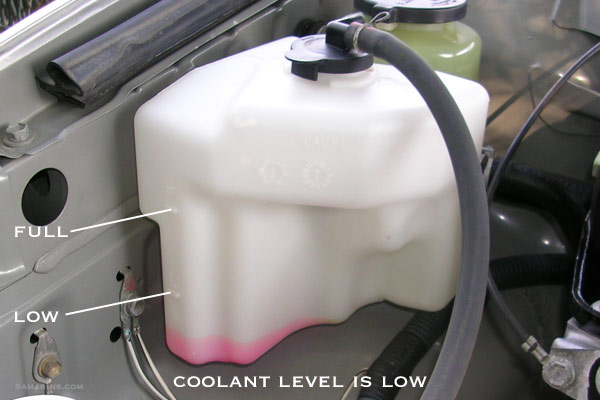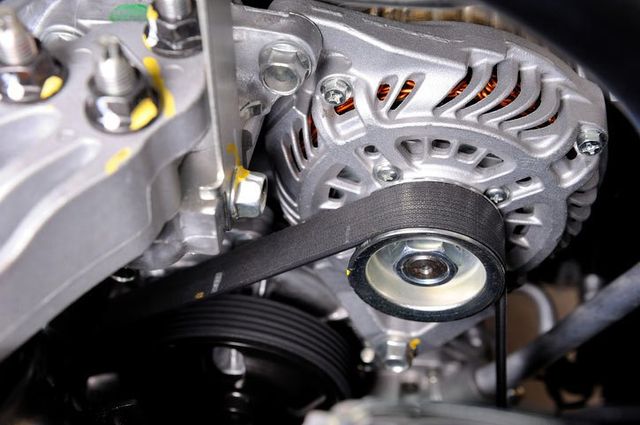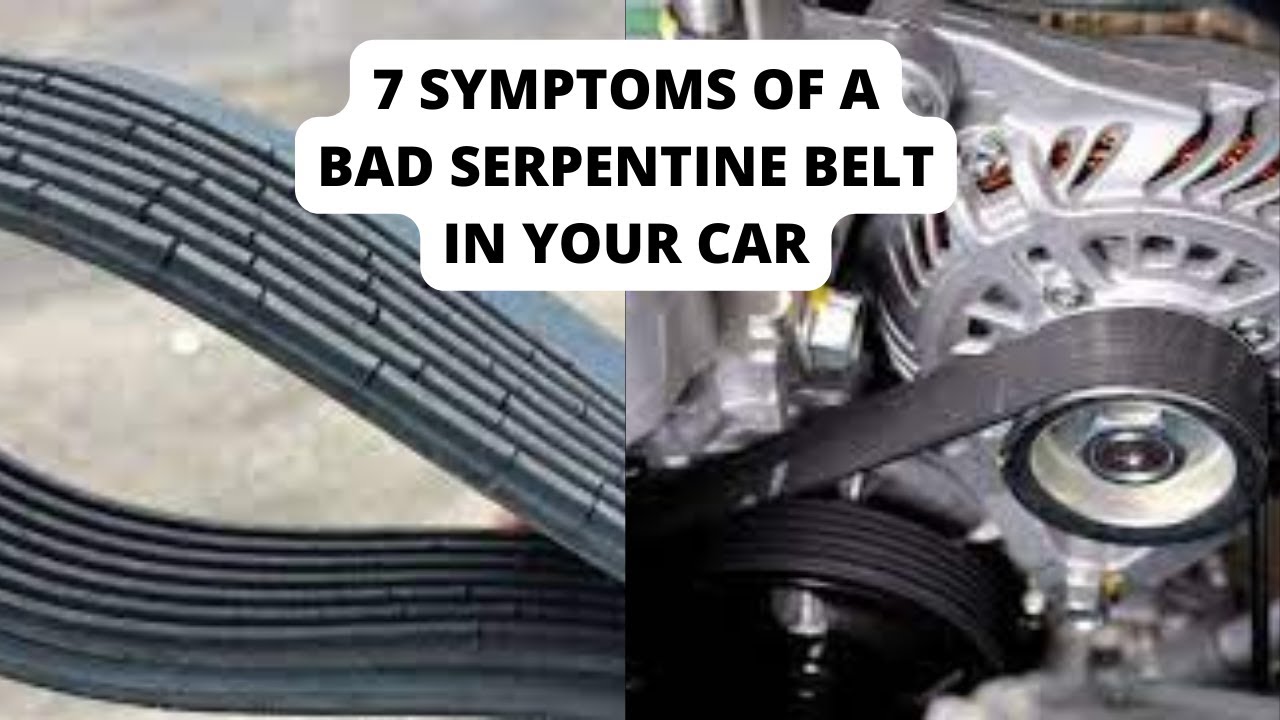Can Low Coolant Cause P0128 Code
Low coolant can sometimes cause a P0128 code, indicating the engine is running too cool. A proper coolant level is crucial for optimal engine temperature regulation.
A P0128 diagnostic trouble code is a common issue that can perplex vehicle owners. This code generally points to a problem with the engine’s cooling system, which isn’t allowing the engine to reach its proper operating temperature. Specifically, it signals that your engine is running cooler than expected, which might be due to low coolant levels.
Maintaining the right coolant level is essential, as it allows for proper heat transfer and regulates the engine’s temperature. Ignoring this code can lead to reduced fuel efficiency and potential long-term damage to the engine. It’s important to address such issues promptly to ensure your vehicle continues to run efficiently and avoid more significant problems down the line.

Credit: eeuroparts.com
Role Of Coolant In Engine Temperature Regulation
Coolant plays a crucial part in keeping your car’s engine at the right temperature. Without enough coolant, the engine might run too hot. This could trigger the P0128 code. This code means the engine isn’t reaching the proper temperature fast enough. Let’s explore how coolant keeps the engine at its best performance.
Function Of Coolant In Vehicle Engines
Coolant, also known as antifreeze, routes through the engine to absorb heat. It then moves to the radiator to cool off. This cycle is vital for the engine’s health. Here’s why:
- Prevents overheating by dissipating heat
- Protects engine parts from rust and corrosion
- Maintains a consistent engine temperature
- Ensures smooth performance and efficiency
How Engine Temperature Is Monitored
Sensors keep tabs on the engine temperature. The main sensor is the Engine Coolant Temperature (ECT) sensor. It checks the coolant’s heat level.
The vehicle’s computer uses this information. It figures out if the engine is too cool or hot. If the engine doesn’t warm up properly, it may set off the P0128 code. That’s a sign you might need to check your coolant levels. Here’s what the system does:
- Monitors coolant heat with the ECT sensor
- Feeds data to the vehicle’s computer system
- Adjusts engine functions for optimal heat levels
- Flags issues by triggering diagnostic codes

Credit: www.samarins.com
Decoding The P0128 Trouble Code
When the check engine light turns on, it’s like your car’s way of saying something is not right. The P0128 code is one of these messages. It’s a signal related to the engine’s temperature. Let’s dive into what P0128 really means and why it might show up.
Meaning Of The P0128 Code
A P0128 code tells you there’s an issue with engine temperature. The code means your engine isn’t reaching the desired warming-up temperature. Your car’s brain, the computer, sends this code when it detects a cooler than normal engine operation.
Common Triggers For Diagnostic Codes
- A stuck open thermostat that prevents engine heating up
- Low levels of coolant due to leaks or evaporation
- Faulty engine coolant temperature sensor providing wrong data
- Poor cooling system maintenance, causing inefficiencies
- A damaged wiring harness or electrical connectors
Each of these triggers can lead to a P0128 code. It is crucial to address them quickly to avoid engine damage.
Connecting Low Coolant Levels To P0128
Understanding the relationship between low coolant levels and the P0128 code is important for any vehicle owner. Let’s explore how these two are interconnected and what you might encounter when your car starts displaying this mysterious code.
Impact Of Coolant Levels On Engine Temperature
The engine needs coolant to maintain the right temperature. Coolant absorbs heat and prevents overheating. With low levels, the engine runs hotter than usual, leading to potential damage.
- Keeps engine cool: Prevents overheating during operation.
- Regulates temperature: Balances engine temperature extremes.
- Prevents damage: Withstands high temperatures to stop engine wear.
If coolant is low, the engine temperature rises. The temperature sensor might report a low reading initially. Yet, the engine is actually at risk due to inadequate coolant.
Mechanism Leading To A P0128 Code
The P0128 code is a signal from the engine’s computer. It means the temperature is too low for optimal performance. This happens when the thermostat fails to open. Or when there is not enough coolant in the system.
- Thermostat monitors temperature: Ensures engine reaches and maintains proper heat levels.
- Code activates: Occurs when the thermostat does not open.
- Possible low coolant: Code may appear with insufficient coolant as well.
When coolant level drops, the engine fails to reach the ideal temperature. The thermostat remains closed. The sensor sends a signal, and the computer sets off the P0128 code.
Troubleshooting The P0128 Code
The P0128 code is a signal that your vehicle’s engine is not reaching its required temperature for optimal performance. Could low coolant be the culprit? Let’s dive in and diagnose the issue thoroughly.
Steps To Diagnose The Issue
Checking the coolant level is the first step.
- Locate the coolant reservoir under the hood.
- Ensure the engine is cool before proceeding.
- Check the markings on the side of the tank.
- If levels are low, add coolant to the correct fill line.
Inspecting the thermostat comes next.
- Find the thermostat housing near the engine.
- Remove the thermostat and check for malfunctions.
- Replace with a new thermostat if needed.
Testing the engine temperature sensor may unveil issues.
- Consult the vehicle’s manual for sensor location.
- Use a multimeter to test sensor function.
- Replace the sensor if it shows signs of failure.
Evaluating Coolant System For Leaks
Visually inspecting for leaks around the cooling system is crucial.
- Check hoses, the radiator, and the water pump for cracks.
- Search for puddles or drips of coolant beneath the car.
- Look for white streaks or corrosion on engine parts.
Performing a pressure test can pinpoint hidden issues.
- Attach a pressure tester to the radiator cap.
- Pump the tester to build pressure in the system.
- Watch the gauge for dropping pressure indicating a leak.
Checking the radiator cap ensures a proper seal.
- Inspect the cap for cracks or damaged seals.
- Test the cap with a pressure tester if available.
- Replace the cap if it fails to hold pressure.
Tackling a P0128 code can seem daunting, but with methodical steps, the mystery unravels. A professional diagnosis is always an option for peace of mind.
Addressing Low Coolant And P0128
When your car’s dashboard shows the P0128 code, it can mean the engine is not warming up fast enough. This can happen if the coolant is too low. The engine needs the right amount of coolant to control its temperature. Let us solve this issue.
Solving The Low Coolant Problem
Keeping your engine’s coolant at the correct level is key. Here are the steps to ensure your engine has enough coolant.
- Check the coolant level: Open your car’s hood when the engine is cool. Find the coolant reservoir and check its level.
- Inspect for leaks: Look around the engine for any signs of coolant leaks. These might be the reason your coolant is low.
- Refill the coolant: If the level is low, top it up with the right type of coolant. Mix it with water if needed, often a 50/50 mix.
- Bleed the system: After refilling, let any trapped air out of the cooling system. This ensures it works properly.
Resetting The P0128 Code After Repair
When your coolant level is fixed, the P0128 code should be cleared. Here’s how to reset the code:
- Use a code scanner: Connect a code scanner to your car’s OBD-II port. It’s often under the dashboard.
- Clear the code: Use the scanner to erase the P0128 code. This tells your car the problem is fixed.
- Take a test drive: Drive for a bit to make sure the engine heats up and the code doesn’t come back.
If the code returns, you may need a mechanic to check other parts like the thermostat.
Preventative Measures And Maintenance Tips
Understanding the importance of regular car maintenance is key to preventing the dreaded P0128 code. This code often signifies that your vehicle’s engine is operating at a lower temperature than optimal, potentially due to low coolant levels. To avoid such issues and costs associated with repairs, consider adopting these preventative measures and maintenance tips.
Regular Checkups To Maintain Coolant Levels
Keeping an eye on your vehicle’s coolant levels is necessary for a healthy engine. Here’s how to stay on top of it:
- Consult your owner’s manual for the correct type and amount of coolant.
- Inspect the coolant reservoir regularly, at least once a month.
- If levels are low, top up with the appropriate coolant mixture.
- Inspect for leaks in the coolant system as these can lead to low levels.
- Monitor engine temperature gauge to catch issues early.
When To Consult A Professional Mechanic
Not all car problems are DIY-friendly, and recognizing when to seek professional help is important:
- When coolant levels drop rapidly without apparent leaks, consult a mechanic.
- Seek advice if the engine temperature gauge reads high frequently.
- If you notice pooling fluid under your car, get a professional inspection.
- Any persistent illuminated engine warning lights should prompt a mechanic visit.
- Regular professional checkups can catch problems before they worsen.
Frequently Asked Questions Of Can Low Coolant Cause P0128 Code
What Is Code P0128 In Vehicle Diagnostics?
Code P0128 indicates the engine is operating below its expected temperature threshold for a specific period. This can be due to a malfunctioning thermostat or insufficient coolant level that prevents the engine from reaching optimal operating temperature.
Can A Low Coolant Level Trigger Code P0128?
Yes, low coolant can cause the P0128 code. Insufficient coolant in the system can lead to a drop in engine temperature. When the temperature fails to reach the designated threshold, the engine control unit may trigger the P0128 code.
How Does Coolant Affect Engine Temperature?
Coolant circulates through the engine to absorb heat and maintain the optimal temperature range. If coolant levels are low, heat is not efficiently dissipated, potentially causing the engine to run cooler than normal and triggering diagnostic codes like P0128.
What Are Common Symptoms Of Code P0128?
Symptoms of P0128 may include the check engine light on, lower fuel efficiency, and potential issues with cabin heating. The engine may also take longer to reach the proper operating temperature.
Conclusion
Understanding the impact of low coolant on your vehicle is crucial, and we’ve seen it can trigger a P0128 code. Regularly checking and maintaining fluid levels is key to avoiding this issue. Remember, a healthy cooling system is essential for optimal engine performance and longevity.
Stay vigilant with maintenance to keep your vehicle running smoothly and efficiently.





